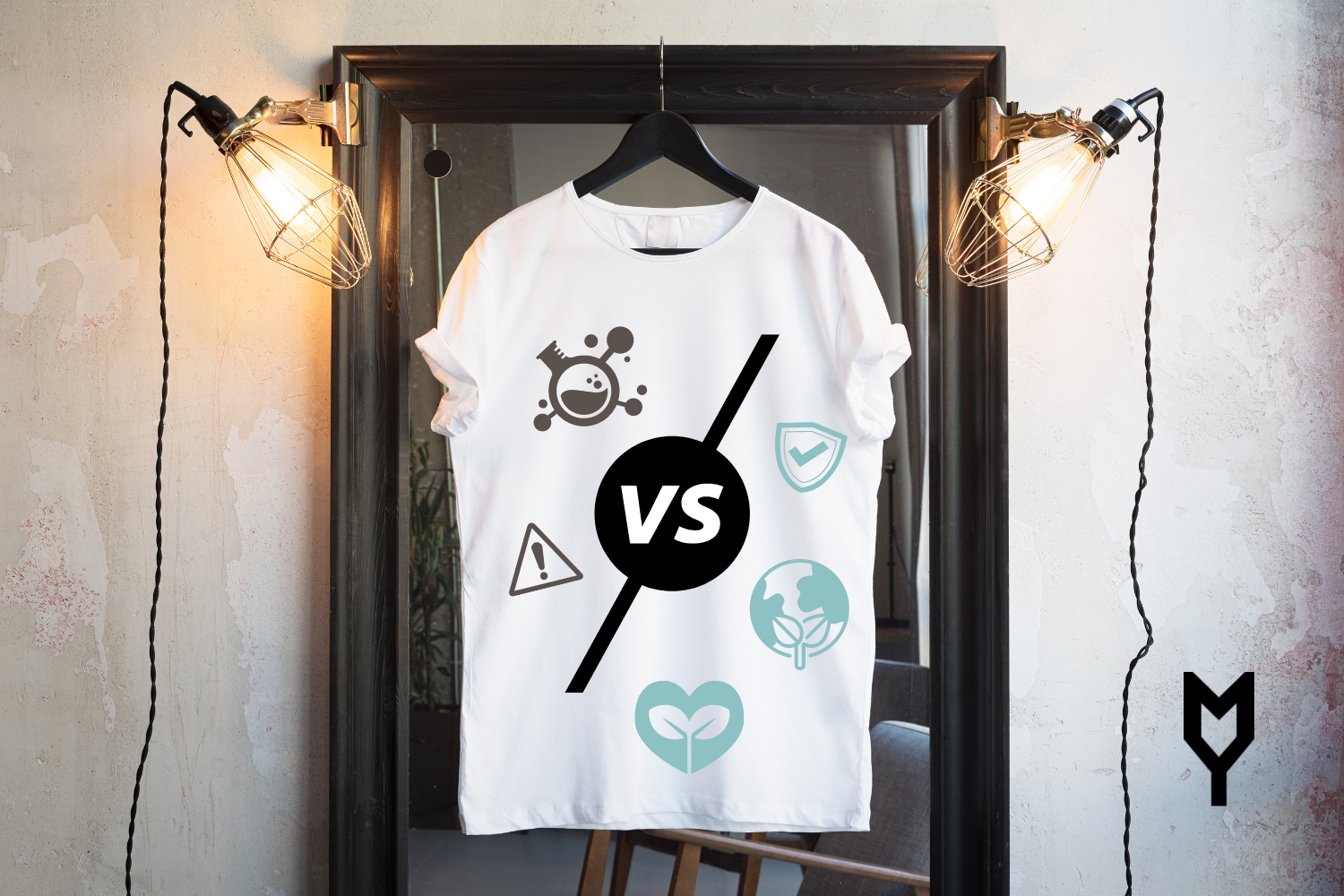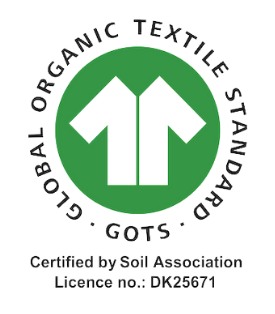Health risks of conventional textile
Irresponsibly produced textile may contain harmful chemicals that pose a threat to our health and the environment. Find out what toxic substances can be hidden in conventional textile, what health risks they pose, and how to choose clothes that are safe for our body.

Every day we are in contact with various materials and textile in particular come into direct contact with our body. In the same way that we choose healthy and high-quality food, our clothes should also be chosen responsibly and with the knowledge of protecting our health. Although the textile does not look dangerous at first glance, it is necessary to look at its production path, which has left its traces. Two t-shirts that look identical can have a very different story behind them and thus different effects on their wearer.
Problems of the textile industry
 The textile industry is one of the industries with the largest consumption of water, chemicals and energy. Conventionally produced textile is very often so-called fast fashion, which strives for the largest possible volumes at the lowest possible price, but usually at the expense of quality and our health.
The textile industry is one of the industries with the largest consumption of water, chemicals and energy. Conventionally produced textile is very often so-called fast fashion, which strives for the largest possible volumes at the lowest possible price, but usually at the expense of quality and our health.
In order to make textile as attractive as possible to customers, conventional manufacturers use a significant number of different chemical compounds that modify the fabric to make it as soft, colourful, and pleasant to the touch as possible. All this while trying to achieve the lowest possible costs.
Conventionally produced textile has often gone through a harsh manufacturing process. From the unsustainable cultivation of source crops with the use of pesticides, to fiber bleaching, dyeing and various chemical treatments, for example to stiffen the fabric, to make it antifungal and water resistant, to slow down burning or to optically brighten the fabric.
How can conventional textile threaten human health?
 All these unsustainable interventions leave toxic traces on the textile, which can have very serious consequences for human health. It happens that there are low hygienic requirements for the use of chemicals in production, and therefore the health of employees who encounter dangerous substances to the greatest extent is at risk. Likewise, the environment - soil, waterways and animals are seriously affected by the irresponsible approach of textile producers.
All these unsustainable interventions leave toxic traces on the textile, which can have very serious consequences for human health. It happens that there are low hygienic requirements for the use of chemicals in production, and therefore the health of employees who encounter dangerous substances to the greatest extent is at risk. Likewise, the environment - soil, waterways and animals are seriously affected by the irresponsible approach of textile producers.
However, harmful chemicals also pose a danger to the wearer himself. Toxic substances in clothing are absorbed into the body through the skin and by inhaling released particles and vapours. This can cause various skin problems, such as irritation, itching and eczema, as well as other allergic reactions, headaches and dizziness, insomnia, or even damage the hormonal and immune systems or be carcinogenic.
What toxic substances can conventionally produced textile contain?
 There is a long list of dangerous chemicals used to achieve special textile characteristics. The most commonly used toxic substances include:
There is a long list of dangerous chemicals used to achieve special textile characteristics. The most commonly used toxic substances include:
- Formaldehyde – It is mainly used to create a non-creasing fabric and also to prevent the fabric shrinking or colour fading. Formaldehyde can be released into the atmosphere and in larger quantities can cause breathing problems, irritate the skin or cause an allergic reaction.
- Phthalates – They are used to make the textile soft. However, they are toxic to the body.
- Azo dyes – They are found in dyes to create more vivid colours. However, they can easily detach from the fibers and continue to release carcinogenic chemicals.
- Heavy metals – They are often used as part of the dyeing process to make the colour last through washing. These include, for example, chromium, mercury, lead, antimony, cadmium, copper and others. Metals are absorbed by the body and can accumulate in the liver or kidneys, which can have serious health consequences.
- Furthermore, for example, phenols or organic tin compounds for antimicrobial treatment, toxic chlorobenzenes, silicones or brominated and chlorinated flame retardants. And many others...
How can we be sure that our clothes do not contain dangerous chemicals?
Clothing can also be produced in a sustainable way, both for nature and for the health of employees and customers. When choosing a textile, it is good to check the material composition, and above all verified certificates. For example, certified organically grown cotton is a safe hypoallergenic material that is soft to the touch and contains no unnecessary chemicals.
TIP: Wash the new textile before wearing to get rid of possible small dirt from production and transport. Do not forget to always wash organic textile gently - according to the instructions on the label and using eco detergents, so that its organic purity does not deteriorate.
 We recommend choosing GOTS (Global Organic Textile Standard) certified textile that guarantees compliance with strict ecological and ethical standards in all production stages of an organically grown product, including printing at MERCHYOU. With a fully GOTS certified product, you can be sure that you are protecting both the natural environment and your health.
We recommend choosing GOTS (Global Organic Textile Standard) certified textile that guarantees compliance with strict ecological and ethical standards in all production stages of an organically grown product, including printing at MERCHYOU. With a fully GOTS certified product, you can be sure that you are protecting both the natural environment and your health.
 Another indicator that we can use is OEKO-TEX® Standard 100 certificate. For textile with the Standard 100 label, we can be sure that both the fabric itself and its components such as threads, buttons, zippers, as well as dyes and surface treatments, have been tested for the presence of harmful chemicals. The certificate thus guarantees that the final product is safe for human health.
Another indicator that we can use is OEKO-TEX® Standard 100 certificate. For textile with the Standard 100 label, we can be sure that both the fabric itself and its components such as threads, buttons, zippers, as well as dyes and surface treatments, have been tested for the presence of harmful chemicals. The certificate thus guarantees that the final product is safe for human health.
Take a look at our catalogue where you can easily filter GOTS or OEKO-TEX certified textile in our offer. One of the responsible GOTS certified manufacturers is Stanley/Stella, which you can also find in our offer.
At MERCHYOU, we strive to be as sustainable as possible to the environment as well as human health and we constantly improve to provide you with the most sustainable merch possible. Read more about sustainability in our production.
Thank you for chosing textile responsibly and supporting sustainable producers.
Our health is worth protecting!
💚
Sources: Chemicals in textiles I Ekonews.cz I Effects of Textile Materials Harmful to Human Health I Oeko-tex Standard 100 I Oeko-tex Certified fabrics

